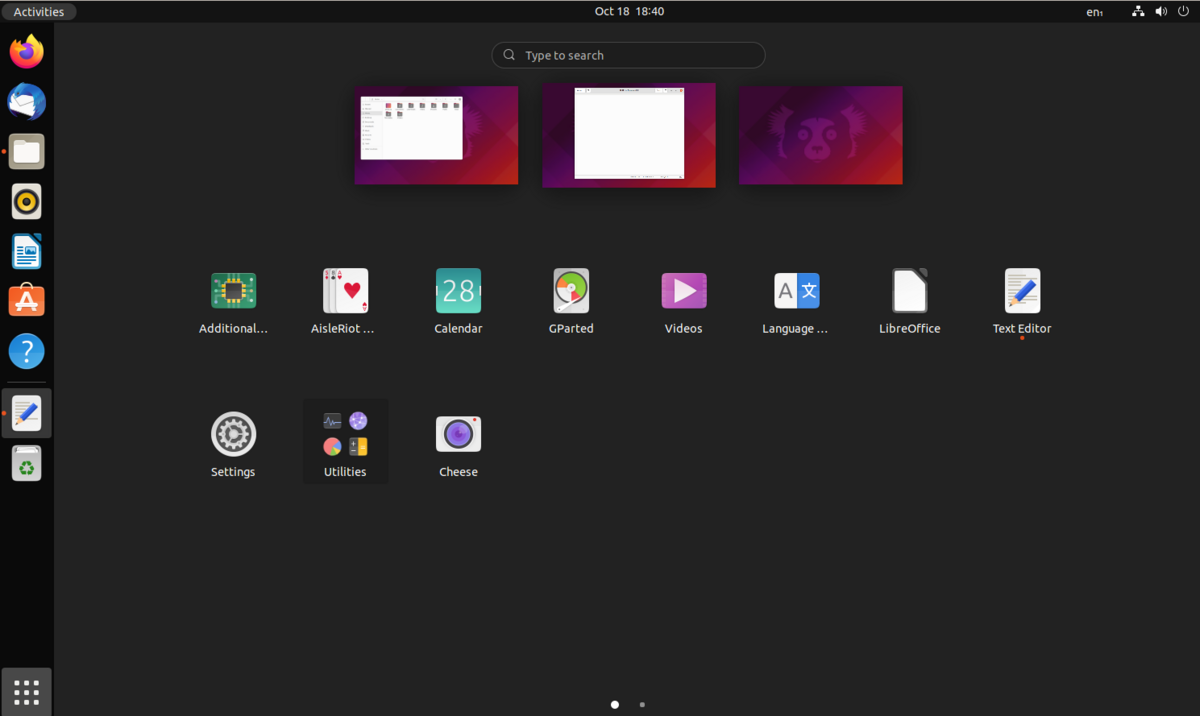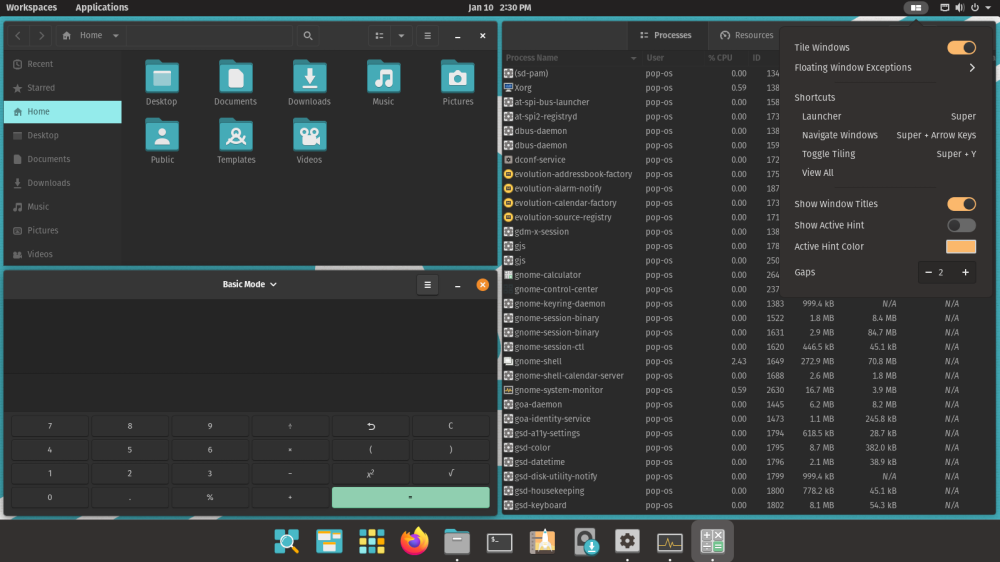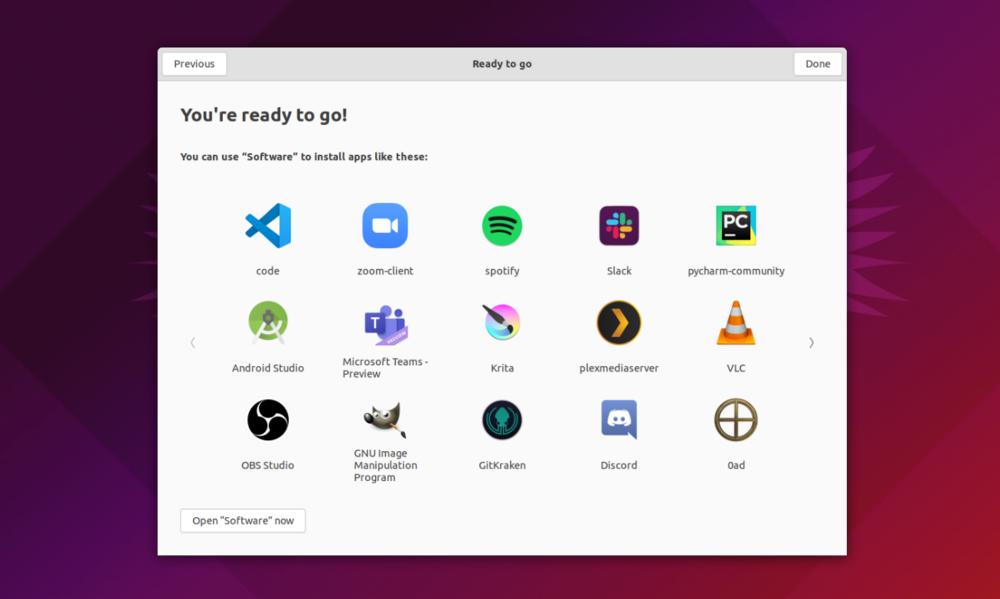Ubuntu initially garnered attention for being a version of Linux that was easy to install and actually use. But that wasn't all. Ubuntu was exciting. Canonical and the Ubuntu community innovated the desktop, thinking creatively about what the Linux experience needed or could become.
Two decades later, Ubuntu has more users, but that fire doesn't seem to burn as bright. Here are some reasons the Ubuntu desktop now seems relatively dim.
1. Ubuntu Is Now More Reactive Than Proactive
For years, Canonical tried its hand at creating its own desktop environment. Unity was an ambitious attempt to make an experience that adapted well to desktop and mobile devices. This was an expensive undertaking, and Canonical eventually decided to switch to GNOME, patching this particular desktop to retain certain aspects of the Unity experience.
In a sense, this was a return to Ubuntu's roots. Early versions of Ubuntu came with the GNOME desktop environment. But in the past, Canonical created extensions that expanded what GNOME could do.
The MeMenu consolidated messaging and social media status to one location on your desktop. NotifyOSD notifications were an attractive way to deliver passive updates. Ayatana Indicators cleaned up the system tray.
Today, Canonical patches GNOME not to add new functionality, but to preserve the existing experience. Making the dock always visible and on the left isn't a design improvement or enhancement, just a different approach. Putting desktop icons on the desktop isn't something new, just an effort to preserve functionality a number of people still expect.
As new versions of GNOME become more bold and creative in design, such as with the release of GNOME 40, Canonical's desktop team spends time trying to incorporate the latest updates from GNOME while changing the Unity-inspired experience as little as possible. But since GNOME is changing, Ubuntu inevitably changes too, just without a coherent vision.
2. Other Distros Don’t Follow Ubuntu’s Lead
When a desktop does something exciting, others follow. Consider, for better or worse, the extent to which software design emulated Apple's design following the release of Mac OS X and iOS.
In the free software world, leadership isn't merely a matter of inspiring others to imitate you. There is leadership in collaboration. elementary OS, despite being a relatively small project, brings forth innovations that eventually make their way into GNOME and other desktops, such as the introduction of a dark mode standard and accent colors. Fedora leads the way with the development of backend technologies such as the Wayland display server and PipeWire.
At this point, Ubuntu has established a long list of projects that other Linux distributors showed little interest in embracing. This includes the Unity desktop environment, the Mir display server, and the Snap universal package format.
Ubuntu's influence on other Linux desktops seems to come primarily as a reliable infrastructure for others to build on top of, much like Debian.
You can see further evidence of this shift in some of the reasons many people give for using Ubuntu. It's often not Ubuntu-specific features, but having access to all the software tested to run on Ubuntu and the large pool of support available for the distro online.
3. Fun Innovations Are Happening Elsewhere
Other Linux-based desktops have taken over as the place to find bold innovations and experimentation. Ironically, a number of them are based on Ubuntu. For example, elementary OS shows what a pay-what-you-can app store providing software designed specifically for one distro can look like.
Pop!_OS, at least until System76 develops its own desktop environment, shows that a desktop can respond to GNOME's changes and still be proactive. Pop!_OS goes all in on power-user functionality, such as creating a tiling window manager extension that saves people from having to swap out the entire desktop environment for such functionality.
GNOME itself, especially since the release of GNOME 40, is taking big strides forward in design. The entire experience is spatially oriented, with you zooming out of your workspace to launch apps and back in to get to work.
Libadwaita provides developers with a library that gives GTK4-based apps a consistent look and feel complete with animations and the ability to scale automatically for mobile devices. Stock GNOME is available on many distros, but Fedora Linux is known as the easiest place to check out what GNOME is up to.
4. The Desktop Is Starting to Lack Polish
One of the first screens you see after installing Ubuntu is a pop-up demonstrating some of the apps you can install. Many of the examples consist of closed source apps people already use on Windows, macOS, or their smartphones.
That means these are names many people already know, and yet the names of some apps aren't even capitalized. In the screenshot above, Visual Studio Code appears simply as "code." Zoom appears not as "Zoom" but as "zoom-client."
Your home folder contains locations to store your documents, music, pictures, videos, and other file types. These folders are capitalized and come with stylized icons. Then there is a lowercase, generic folder labeled "snap." What goes in here? Is it safe to delete?
Technical users know this folder has something to do with Canonical's snap format, but being able to use your computer without needing this sort of technical knowledge was part of Ubuntu's appeal in the first place.
Canonical will delay a release of Ubuntu when critical issues arise, such as a security vulnerability needing to be patched or an ISO failing to boot on certain systems. That such basic issues that impact peoples' first-impression of the desktop can make it to release, and stick around for years, affirm that the desktop is no longer a primary issue of importance (that, and how far you need to scroll on the Ubuntu website to see a mention of the word "desktop").
5. Ubuntu Software Tends to Lag Behind
Wayland has been around for years, and it has been long established as a replacement for the aging X.Org display server. Ubuntu gave Wayland a trial run in 2017 but then stuck with X for several more years. Wayland wasn't ready yet, the desktop team said.
While Fedora shows its support for new technologies by embracing them early and making them default, Ubuntu is much more cautious.
Unfortunately, this isn't limited to big backend components that may break a lot of expected functionality across a wide range of apps. Ubuntu 21.04 shipped GNOME 3.38, the same version included in Ubuntu 20.10, despite GNOME 40 having already landed. This meant Ubuntu users were stuck on GNOME 3.38 for an entire year.
When Ubuntu 21.10 transitioned to GNOME 40, GNOME 41 was already available in other distros. What changes to functionality do new versions of GNOME break? Canonical's extensions and themes. Users had to wait longer so that Canonical could adapt its own customizations.
This issue extends beyond the desktop environment itself. The introduction of universal package formats has made it easier to get the latest versions of apps, but if you're dependent on the traditional repository, this software is often outdated, especially on long-term support releases. The contrast is especially jarring when comparing Ubuntu to a rolling release distro, like Arch Linux.
So That's It, Ubuntu Doesn't Do Anything?
Not at all. Ubuntu contributes to GNOME development, improving the interface's speed for everyone, not only Ubuntu users. Distros in general may not have rallied around the snap format, but people who use those distros can still install apps from Canonical's store. Canonical's hardware enablement stack makes Linux distros based on Ubuntu support more of the latest hardware.
In the end, Canonical and Ubuntu remain an invaluable part of the Linux community, even if the Ubuntu desktop has become somewhat a victim of its own success.




